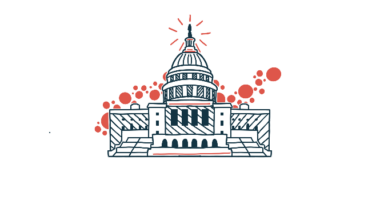Columbia gets $15M to design gene therapies for rare ALS forms
Researchers hope to learn more about ALS biology, help broader patient base

Columbia University researchers will use a $15 million federal grant to design individualized gene therapies for nine people with ultra-rare genetic forms of amyotrophic lateral sclerosis (ALS).
The three-year grant comes from the National Institute of Neurological Disorders and Stroke’s (NINDS) Ultra-rare Gene-based Therapy (URGenT) Network, a program supporting the development of genetic treatments for ultra-rare neurological diseases. NINDS is part of the National Institutes of Health.
The funding directly supports Silence ALS, an initiative aimed at developing customized treatments for ALS patients whose disease derives from ultra-rare genetic mutations, or mutations occurring in fewer than 30 patients globally.
Researchers are confident that as they gain additional knowledge about ALS biology, the project could ultimately also help those with more common disease forms.
“We don’t fully understand the links yet,” Neil Shneider, MD, PhD, associate professor of motor neuron diseases at Columbia, said in a university press release. “By comparing these ultra-rare patients and their response to individualized therapy, we hope to learn something about the biology of the disease that will eventually help a larger percentage of ALS patients.”
Focus is ASO gene therapies
“There are clinical and pathological similarities between genetic and more common forms of ALS, which gives us real reasons to think they have a common underlying biology and that these different mutations are entry points into shared pathways of disease,” Shneider said.
Silence ALS was launched in 2022 by Shneider, who is also director of the Eleanor and Lou Gehrig ALS Center at Columbia’s Vagelos College of Physicians and Surgeons, in collaboration with the n-Lorem Foundation. The idea was to develop customized therapies employing a gene-silencing technology called antisense oligonucleotides (ASOs).
ASOs are small molecules that can bind to messenger RNA, the intermediary molecules made from a specific gene and used as a template for protein production, targeting them for degradation and reducing protein production. They can be quickly developed to target the mutation of each patient, potentially enabling individualized treatments for ALS and other ultra-rare conditions.
An ASO molecule sold under the brand name Qalsody (tofersen) is already approved to reduce abnormal SOD1 protein levels in ALS patients carrying mutations in the SOD1 gene.
Th U.S. Food and Drug Administration (FDA) in 2022 cleared the first Silence ALS therapy to treat a single ALS patient with an ultra-rare mutation in the TARDBP gene, which provides the instructions for making the TDP-43 protein.
The new grant will build on that success, funding development of potential ASO treatments for ALS patients with mutations in the TARDBP gene or in the CHCHD10 gene, which also causes frontotemporal dementia. The project will also seek to target other ALS genetic mutations that are dominantly inherited — or in which a single mutated copy of the gene is enough to develop the disease.
The funds will support all treatment development activities, including animal toxicology studies that will support submissions to the FDA requesting the initiation of first-in-human trials.
As its infrastructure grows through URGenT funding, Silence ALS hopes to produce a model that can be followed by other ultra-rare disease communities. The program is in contact with international partners to see whether similar treatment programs are possible in other countries.
“Silence ALS aims to create knowledge, experience, and efficiencies that will inform our understanding and approach across diseases and treatment modalities,” said Chris Boshoff, PhD, program director of the URGenT Network. “It is poised to establish a model for therapeutic development in ultra-rare disease.”
“The FDA is the only regulatory body that allows ASO development for ultra-rare cases, and my hope is that the Silence ALS experience will help to de-risk this approach and convince other regulatory agencies to allow something similar,” said Shneider.







